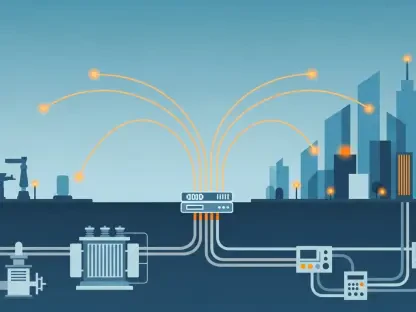Machines cycle in seconds while people coordinate in minutes, and that mismatch silently taxes throughput, safety, and morale long before anyone can print a report or convene a stand-up. What changes the equation is a communications layer that hears what operators say, understands intent in context, and routes the right information to the right person without adding screens, taps, or extra steps. Voice AI, anchored in low-latency infrastructure, turns speech into structured signals across production, maintenance, quality, logistics, and safety. The effect is not a flashy gadget but a calm, continuous channel: fewer walk-arounds, fewer relays, fewer gaps at shift change. When responses arrive as quickly as conversation, the shop floor starts to move as one system rather than a maze of handoffs and guesswork.
The Communication Gap on the Floor
Every plant tracks scrap, downtime, and changeover, yet miscommunication sits upstream of all three, draining budgets in ways that rarely appear on daily dashboards. Large firms routinely lose tens of millions each year to avoidable misfires, and mid-sized sites lose roughly $420,000 per 1,000 employees, a penalty that compounds with each shift and each line. The culprits are familiar: delayed handovers that force operators to rediscover problems, general alarms that do not specify who should act, and paper notes that decay into partial truths. Add noise, gloves, and time pressure, and even simple data entry becomes sporadic, leaving supervisors to chase context rather than manage flow.
Voice AI addresses those frictions by turning everyday speech into structured, routable information that moves at the pace of operations. A short utterance becomes a timestamped update; a quick callout becomes a targeted alert; a diagnostic observation becomes a maintenance ticket instead of a vague memo. Moreover, the system reduces decision fatigue by removing guesswork about whom to contact and how to record what was seen. Instead of relying on fragmented tools—walkie-talkies for urgency, whiteboards for plans, spreadsheets for history—the floor gains a single, always-on channel that captures nuance and preserves it. Precision rises, ambient noise falls, and people spend more time acting than coordinating.
Why Latency Decides Adoption
All of that only holds if responses feel instantaneous. When replies lag, even by a couple heartbeats, workers default to the habits that have always worked well enough: a direct shout, a radio call, a supervisor tapped on the shoulder. Low-latency APIs such as Falcon matter because they keep the interaction inside the rhythm of real work—speak, hear, act—without the cognitive friction of waiting for a screen to refresh or a bot to think. In noisy environments, milliseconds become social proof; if the system responds as fast as a teammate would, it earns trust, and trust turns pilots into standard practice under production pressure.
Precision is the second pillar. Factory life punishes blast messaging, creating alarm fatigue that dulls attention when it is needed most. A modern stack must separate roles, zones, and states so that operators receive concise, relevant instructions while everyone else remains focused. Hands-free prompts create structured records without forcing rigid phrasing, and noise-robust models preserve accuracy despite fans, conveyors, and forklifts. Together, speed and precision free teams from relays and re-entry. The goal is not to replace human judgment but to remove the drag around it, allowing skilled people to fix problems immediately instead of narrating them across channels.
From Handovers to Safety: Practical Voice AI in Action
Shift handovers are the first proof point. Guided prompts lead operators to speak machine status, maintenance actions, output targets, and safety concerns, which are instantly summarized for the incoming team. The next crew starts with a concise, standardized briefing rather than a stack of rushed notes and verbal asides, cutting startup confusion and repetitive questions. The same pipeline automates task routing: a fault description generates a maintenance ticket; a material warning pings logistics before a line starves; a suspected defect alerts quality and the area supervisor. During critical events, the system issues role- and zone-specific instructions, from controlled shutdowns to staged evacuations, replacing blaring sirens with targeted, clear steps.
Hands-free reporting closes the loop at the line. Operators speak production counts, downtime reasons, and quality observations without leaving their stations, and the system posts updates to central tools with timestamps and context. That immediacy matters because ambiguous instructions remain a major source of errors and lost productivity, and timely data helps supervisors intervene before trends harden into defects. Instant knowledge access adds leverage: voice queries surface SOPs, troubleshooting steps, and machine histories buried in binders or remote terminals. A technician can request reset guidance mid-repair; a new hire can follow step-by-step directions without breaking pace. The combination delivers fewer interruptions, faster fixes, and steadier flow.
Operational Next Steps and Outlook
The path forward had favored incremental wins over grand rewrites, and the most resilient plants started with narrow, high-volume exchanges where speed paid back quickly: shift handovers, fault triage, material calls, and safety instructions. Teams defined routing rules tied to roles and zones, tuned latency budgets until responses felt conversational, and integrated with existing maintenance, MES, and safety systems rather than replacing them. From there, sites layered in noisy-environment tuning and concise phrasing guidelines so that spoken inputs stayed natural while records stayed consistent. As adoption broadened, leaders tracked reductions in handover time, mean time to repair, and false alarms to guide further rollout.
Those steps reshaped daily work without upheaval. Communication turned into an ambient service that listened, structured, and delivered information in real time, while people retained control over judgment and escalation. Plants translated sensor anomalies into directed action within seconds, trimmed rework by making instructions clear at the point of need, and eased cognitive load by eliminating unnecessary relays. Voice AI functioned as augmentation, not replacement, proving its value through faster continuity, safer responses, and cleaner data. With a reliable, low-latency backbone in place, the floor operated with greater calm and higher output, and information consistently reached the right ears at the right moment.









